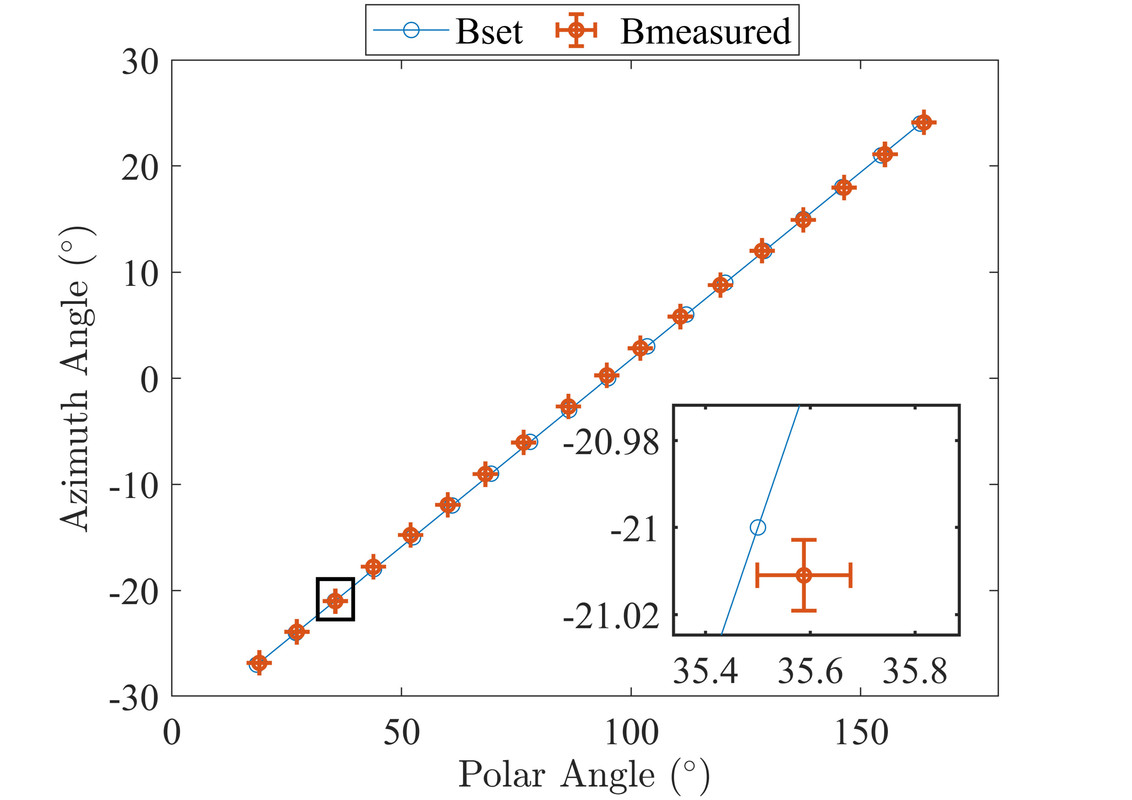Speaker
Description
Vector magnetometers provide lots of information for applications that require analysis of magnetic source ranging from bio-imaging to geophysical exploration. Magnetometer based on nitrogen-vacancy (NV) centers in diamond, as an unprecedented combination of spatial resolution and magnetic sensitivity, however, normally need complex manipulation to distinguish the correspondence between field projections and NV axes1, or even unable to measure certain field directions[2]. We developed an omnidirectional vector magnetometry which combines precise measurements of full NV axes by few applications of magnetic fields, and logical solving the correspondence and readout of overlapped resonance frequencies by selectively magnetic manipulating NV ensembles, ensuring a good detection accuracy in all directional detections. This method is not only intelligent and convenient, but also capable of measuring dead zones due to overlapping. With conventional laboratory setup and commercial NV samples, we achieved an angular resolution around 0.02˚ in all direction of magnetic field and an angular error around 0.2˚. The angular resolution is expected to reach arc seconds by optimization of experimental conditions. This method can improve the universality and practicality of NV magnetometers, and promote the development of NV towards industrial magnetometers.

1 T. Weggler, C. Ganslmayer, F. Frank, T. Eilert et al., “Determination of the three-dimensional magnetic field vector orientation with nitrogen vacancy centers in diamond,” Nano Letters, vol. 20, no. 5, pp. 2980–2985,2020.
[2] P. Reuschel, M. Agio, and A. M. Flatae, “Vector magnetometry based on polarimetric optically detected magnetic resonance,” Advanced Quantum Technologies, vol. 5, no. 11, p. 2200077, 2022

